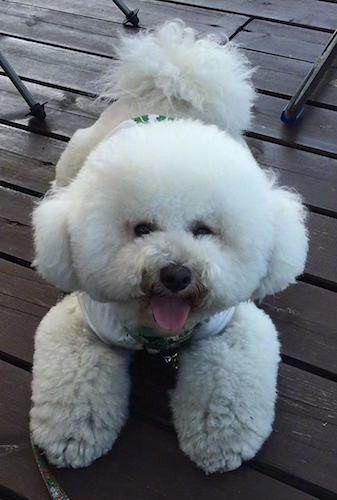
Dung the Bichon Frise at 2 years old
BEE-shon Free-ZAY
The Bichon Frise is a small, sturdy dog. When the dog is clipped in a show cut the body gives off a round appearance. The skull is slightly rounded. The muzzle is shorter than the skull, is not pointed, and has a slightly pronounced stop. The round eyes are black or dark brown. The ears are dropped covered in long hair. The teeth should meet in a scissors bite. The legs are straight and medium boned. Dewclaws are usually removed. The tail is carried over the back. The double coat is soft to the touch. The outer coat is 3 to 4 inches (7-10 cm) long and is coarser and curlier than the soft dense undercoat. Coat colors include solid white, cream, gray or apricot. White is preferred in the show ring. The coat is hypo-allergenic. Pet owners usually clip the dog in an easy care puppy cut that is the same length all over the body. The dog can be shown with its coat clipped like a poodle or with a long, puffy coat with the feet and muzzle clipped.
The Bichon is a fluffy, little white dog that loves human company. It has an independent spirit, is intelligent, affectionate, bold and lively. This charming, gentle dog is not a yapper. It has a self-assured, happy temperament that is easy to live with. These bright little dogs are easy to train and just plain old love everyone. They need people to be happy. They are naturally sociable and are happiest when they are part of a family that takes them everywhere. This sociable trait also means that they are fine in the company of other dogs and pets and are excellent with children. Used as watchdogs and to perform tricks, this breed is competitive and obedient. Like a lot of smaller breeds, the Bichon may be difficult to housebreak. The Bichon Frise needs rules to follow, and limits to what they are and are not allowed to do. They also need a daily pack walk. Do not allow this little dog to develop Small Dog Syndrome, a human induced behavior where the dog feels he is pack leader to humans. This can cause varying degrees of a wide variety of behavior problems. including, but not limited to, obsessive barking, guarding, separation anxiety, snapping, and even biting. These are not Bichon traits, but rather behaviors brought on by the way the dog is treated. If you begin to be your dog’s pack leader, and are consistently self-assured, calm and assertive toward the dog, providing daily pack walks, the Bichon will be a very stable-minded, trustworthy dog.
Height: Males 9 - 12 inches (23 – 30 cm) Females 9 - 11 inches (23 – 28 cm)
Weight: 7 - 12 pounds (3 – 5 kg)
Some are prone to watery eyes, cataracts, skin and ear ailments, also epilepsy and dislocated kneecaps. They can be very sensitive to flea bites.
The Bichon Frise can live in an apartment if it gets enough exercise. They are fairly active indoors and will do okay without a yard.
These are active little dogs that need a daily walk. Play will take care of a lot of their exercise needs, however, as with all breeds play will not fulfill their primal instinct to walk. Dogs that do not get to go on daily walks are more likely to display behavior problems. They will also enjoy a good romp in a safe, open area off-lead, such as a large fenced-in yard.
About 15 or more years
1 - 6 puppies, average 4 - 5
This breed should be groomed frequently and bathed every month. Professional grooming is recommended every 4 weeks. Trim around the eyes and ears with a blunt pair of scissors and clean the eyes extensively to prevent staining. Show dogs are trimmed with scissors. The body of pet dogs may be clipped with electric clippers though the rest of the dog must still be cut with scissors. The Bichon sheds little to no hair and is good for allergy sufferers.
The Bichon Frise dates back as far as the 13th century. The breed is a descendent of the Barbet Water Spaniel and the Poodle. The Bichon was traded all over the world by Spanish sailors. The dog eventually became a favorite of the 16th century French royal courts. In the 19th century it was a popular organ grinder's dog and also a circus performer. Today the Bichon Frise is primarily a companion and show dog. The Bichon Frise was first recognized by the AKC in 1972.
Gun Dog, AKC Non-Sporting
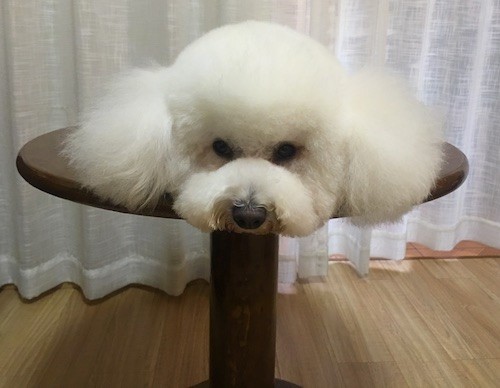
Dung the Bichon Frise at 2 years old
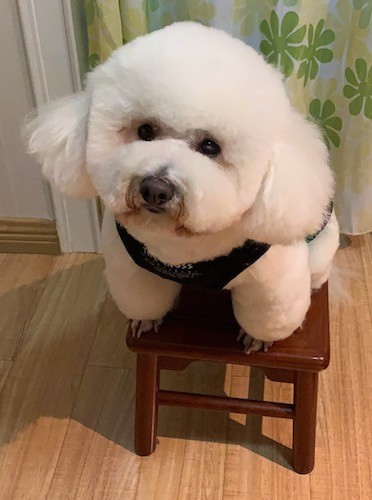
Dung the Bichon Frise at 2 years old
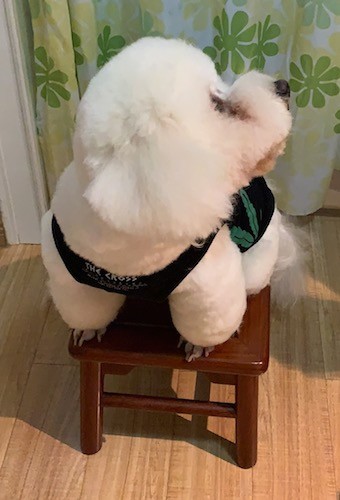
Dung the Bichon Frise at 2 years old

Suzi the Bichon Frise at 5 years old
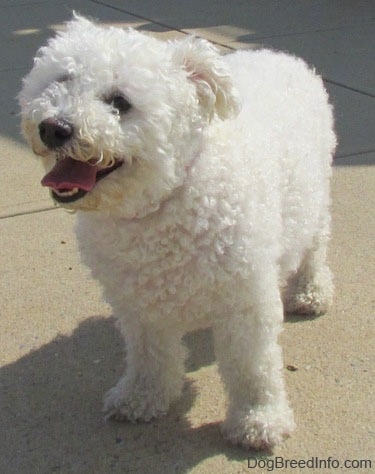
Casey the Bichon Frise at 7 1/2 years old

Marco Jack the Bichon Frise at 10 months old
Sunny the Bichon at 19 months old—"She's a purebred Bichon Frise and is a wonderful dog who loves everyone...especially children!"